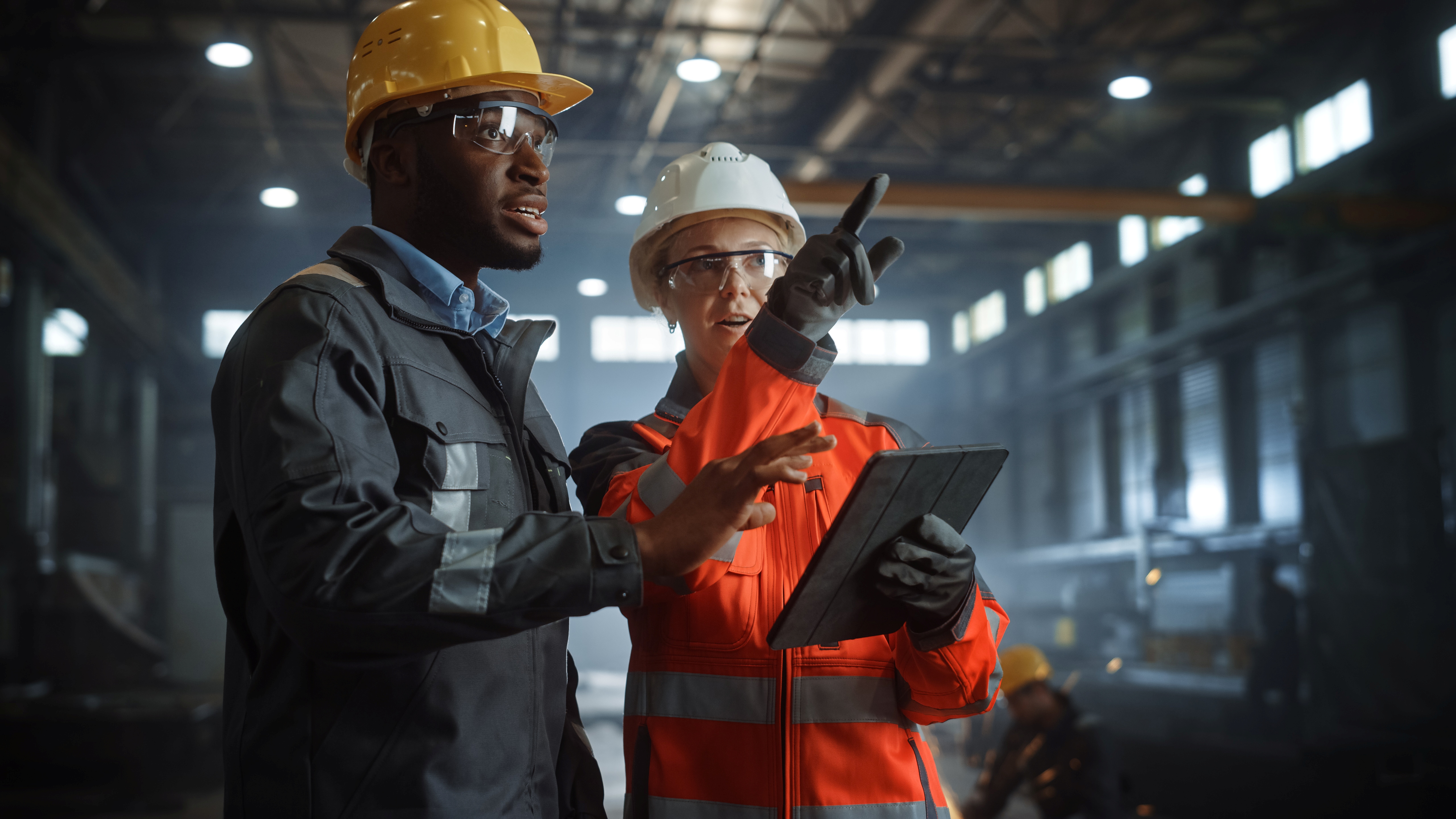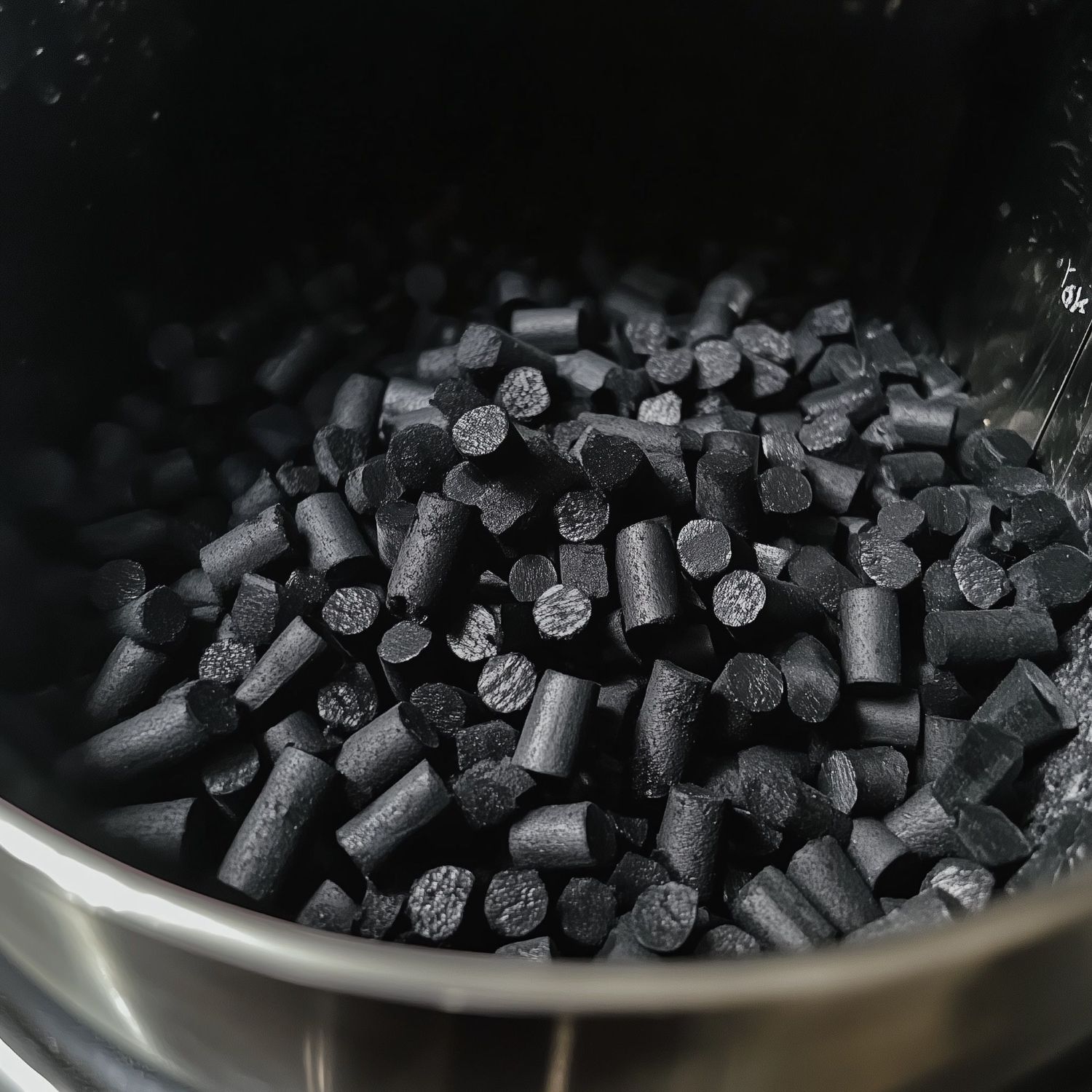We’re shaping a more responsible steel industry.
We have the opportunity to do things differently
ResponsibleSteel is a global, not-for-profit organisation created to maximise steel’s contribution to a sustainable world. Working collaboratively with our members, we have developed an independent standards and certification programme for steel via a process that uses the ISEAL Codes of Good Practice as a reference. Together, we are setting the global standard for responsibly produced net-zero steel.

We’re at a pivotal moment in the steel industry
According to ResponsibleSteel's calculations using data from RMI and the International Energy Agency (IEA), the steelmaking process, from the extraction of raw materials to the production of steel, accounts for 10% of global GHG emissions. We face a collective challenge to transform the industry, reducing global emissions while ensuring a just transition for workers and local communities.
We have over 160 members working to deliver on our mission to drive responsible steel production.
According to the IEA's Net Zero Emissions Scenario, we need to reduce steel industry emissions by at least 90% by 2050, compared to 2022.
We have over 80 ResponsibleSteel certified sites globally.
Over 230,000 workers are covered by ResponsibleSteel certification.
Over 30% of furnaces covered by ResponsibleSteel certification are EAFs.
This is the future of steel
Our members are at the heart of our work
ResponsibleSteel’s membership consists of representatives from across the steel value chain, including businesses, NGOs, trade associations, and other organisations with an interest in our mission. This means our standards are uniquely shaped by multiple perspectives, and their adoption requires the support of both business and civil society members. We encourage organisations globally to join us to create lasting impact for people and the planet.








































Certified sites around the world

Latest news & events


Building trust in steel: Understanding the ResponsibleSteel certification process
Steel production is one of the most emissions-intensive industries in the world. As the market shifts toward more sustainable, low-emission practices, steelmakers need a reliable way to demonstrate their performance, while steel buyers and investors need confidence in their investment and procurement decisions.
ResponsibleSteel’s independent, multi-stakeholder standard and certification programme sets the benchmark for responsible steel production worldwide. But how does it work in practice?
1. The ResponsibleSteel International Production Standard
Certification is based on the ResponsibleSteel International Production Standard, built on 13 Principles covering the full ESG spectrum from decarbonisation, water and biodiversity to labour rights, community engagement, human rights, and more.
This ensures that sustainability in steel is measured holistically, not just by emissions, giving buyers, investors, and other stakeholders a clear view of a steelmaker’s overall ESG performance.
2. Independent, third-party audits
To achieve certification, a steel site undergoes a rigorous audit by trained, independent auditors from one of ResponsibleSteel’s approved certification bodies.
Auditors assess conformity with the Principles, reviewing documentation, interviewing workers and stakeholders, and visiting the site. This ensures the process is robust, credible, and impartial, giving stakeholders full confidence in the results.
3. Major and minor non-conformities
During the process, auditors may identify opportunities for improvement, as well as non-conformities. These can be either major or minor non-conformities.
A minor non-conformity is typically a one-off or minor issue that doesn’t affect the site's capability to meet the overall objective of the relevant criterion or principle. It might be an isolated incident or something with only a limited impact on the site’s ability to operate responsibly. A site can be certified with minor non-conformities but must take steps to amend these non-conformities and demonstrate improvement during future audits.
A major non-conformity, on the other hand, is a serious issue, meaning that a site is not meeting the overall objectives of the Production Standard. This could be a single major incident or a series of smaller problems that demonstrate a systemic issue. A site with a major non-conformity cannot be certified until the issue has been properly addressed. Should a major non-conformity arise after certification, the certificate could be suspended depending on the severity of the issue.
4. Certification decisions
Audit reports are reviewed by the ResponsibleSteel team and/or an independent Assurance Panel to check whether they meet our reporting expectations and that the certification body/auditors followed the procedures outlined in the ResponsibleSteel Assurance manual.
With experience across steel, social and environmental issues, and auditing and certification, the Assurance Panel provides independent oversight. It plays a vital role in ensuring the rigour of certification decisions made by certification bodies.
Once sites are certified, their certificates are publicly listed on ResponsibleSteel’s website alongside a summary of the audit findings, providing transparency for industry stakeholders.
5. Continuous improvement
Certification is not a one-off achievement. Certificates are valid for three years, during which time sites must undergo a surveillance audit and complete the recertification process to maintain their status. Issues and complaints against the site can also be raised by stakeholders in between audits via ResponsibleSteel’s Issues Resolution Process. Depending on the severity of the problem, a special audit may be conducted by auditors.
Confidence for stakeholders
For steel buyers, investors, and other stakeholders, certification provides assurance that a steelmaker is operating at some of the highest standards in the industry across social and environmental issues. Certification helps to:
- Mitigate environmental, social, and governance (ESG) risks
- Support compliance with regulatory and reporting requirements
- Improve transparency and accountability across the supply chain
Driving progress and future-proofing business
ResponsibleSteel certification is more than a label – it’s a framework to help reduce risk and accelerate change across the value chain. By asking steelmakers about certification, buyers and investors send a clear signal that drives progress towards responsible, low-emission, and near-zero steel.
Learn more about ResponsibleSteel certification here.
Are you a steelmaker? Find out how you can begin the certification journey here.
Are you a steel buyer or investor? Learn more about how Certified Steel can support you here.


September 2025 Newsletter
The September edition of the ResponsibleSteel™ newsletter is here.
India is an essential part of the global journey towards a responsible, low-emissions steel sector. Our recent event in New Delhi, Accelerating Decarbonisation of the Steel Sector in India, marked an important milestone in our work in the region. The discussions and insights shared were invaluable, and we thank all who contributed.
We are also calling for nominations for a Board Director in the Business category, an important opportunity to help shape ResponsibleSteel’s future direction.
In this month’s newsletter, you can read about:
- Highlights from our New Delhi event
- A call for Board Director nominations
- Welcoming Instant Steel Solutions as a new member
- A member blog from Karmanterra on biocarbon in steelmaking
- Updates on the ResponsibleSteel Standard revision
- Reflections from our latest Just Transition webinar
…and more.
Read the full newsletter here.


Biocarbon in steelmaking: A natural path to decarbonisation with real challenges
In this blog, authored by Karmanterra, the opportunities and challenges of using biocarbon in steelmaking are explored. Biocarbon offers a natural pathway to reduce emissions and support compliance under frameworks such as the EU ETS, but scaling its use requires reliable biomass supply chains, investment in infrastructure, and careful technical integration. Drawing on developments in regions like the American Southeast, Karmanterra highlights how nature-based solutions can play an important role in the steel industry’s journey to net zero.
As global pressure mounts on industries to decarbonise, the steel sector, one of the world’s largest industrial carbon emitters, faces growing scrutiny. In Europe, regulatory frameworks like the EU Emissions Trading System (EU ETS) are intensifying incentives for companies to find lower-carbon pathways. One promising solution gaining momentum is biogenic carbon, commonly known as biochar or biocarbon, as a substitute for fossil-based coal and coke in steelmaking.
Why biocarbon?
Biocarbon is produced by pyrolyzing or gasifying biomass such as forestry residues, agricultural waste, or other organic matter in the absence of oxygen. The resulting material is rich in carbon and can replicate many of the properties of coal or coke in metallurgical processes. From an environmental standpoint, the carbon in biocarbon is considered biogenic—originating from recently living organisms—rather than geologic sources like coal that release fossil carbon when burned. This distinction is critical under the EU ETS, where biogenic emissions are generally exempt from compliance costs.
By replacing fossil-based reductants with biocarbon, steelmakers can lower their reported emissions and reduce liabilities under carbon pricing mechanisms. This could transform steel’s traditionally high-carbon footprint into a more circular, nature-aligned process.
The challenges of scaling a nature-based solution
Despite its promise, the integration of biocarbon into steelmaking faces significant challenges. The steel industry consumes tens of millions of tonnes of coal and coke annually. Replacing even a fraction of this with biocarbon requires a consistent, large-scale biomass supply chain, which is both a logistical and environmental hurdle.
Forestry residues, agricultural byproducts, and energy crops may seem abundant, but sourcing sustainable biomass on an industrial scale demands a sophisticated supply chain close to pyrolysis sites to limit logistical costs and carbon emissions. Proximity to rail or ports is also essential for delivery to steel mills.
Pyrolysis facilities capable of producing metallurgical-grade biocarbon are still limited in number and capacity. The capital expenditure required to build out this infrastructure is significant, and without long-term offtake agreements, financing remains difficult.
Technical differences also exist between biocarbon and traditional coke. Biocarbon generally has lower mechanical strength, different combustion characteristics, and higher reactivity, affecting furnace operation, energy efficiency, and product quality. Naturally derived biogenic materials often contain higher levels of trace minerals such as silicone, boron, and phosphorus, which can be particularly challenging for stainless steel production. As a result, integrating biocarbon into blast furnace and EAF operations requires careful adjustment of feedstocks and may not be feasible in all plant configurations and furnace types.
The American Southeast as a supply source
The American Southeast offers ample opportunity for global biocarbon development. Often called the American wood basket, the region is dominated by fast-growing Southern yellow loblolly pine. Timber inventories remain high, notably in Mississippi, Alabama, Virginia, and Arkansas, where sawtimber volumes are projected to rise by about 17% over the next 10 years.
This abundance of resources could provide the steel industry with the capacity and cost structure to scale up biocarbon adoption. We at Karmanterra have received accreditation from the Sustainable Biomass Program (SBP) to verify and account for the sustainable nature of our biomass to meet the needs of the EU ETS and other cap and trade programs.
Regulatory incentives and the path forward
Policy support is strengthening. The EU ETS continues to tighten, making low-carbon alternatives more economically attractive. Several countries now offer subsidies or tax incentives for industrial decarbonisation, improving the investment climate for biocarbon.
Hybrid steelmaking routes—such as direct reduced iron (DRI) using hydrogen—could work alongside biocarbon, creating flexible, multi-pathway decarbonisation strategies.
Still, for biocarbon to become a viable solution, it will require cross-sector collaboration: from biomass suppliers and pyrolysis operators to steel producers and policymakers. It will need investment in infrastructure, standardised quality specifications, and robust sustainability criteria to ensure that biocarbon use doesn’t create new problems.
Conclusion
Biocarbon offers a real opportunity to reduce steelmaking’s climate impact while offering a pathway to regulatory relief under cap-and-trade systems like the EU ETS. Realising this potential will mean overcoming a complex mix of scale, supply, and technical challenges. As industries and governments accelerate toward net zero, nature-based solutions like biocarbon must be embraced—not as silver bullets, but as integral components of a diversified decarbonisation strategy.
Click here to learn more about Karmanterra.
Note: All opinions expressed within guest blogs are of the author alone, and do not reflect the views of ResponsibleSteel. If you are one of our members/partners and would like to submit a guest blog, please read the editorial guidelines on our website for more information.





